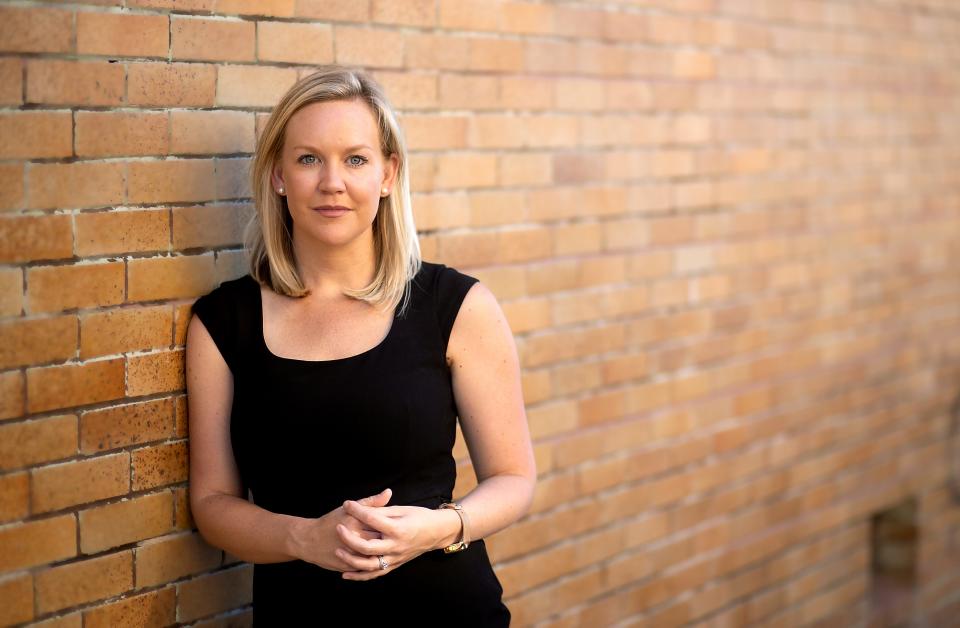Florida got it right after Hurricane Ian
- Oops!Something went wrong.Please try again later.
It’s been a year since Hurricane Ian tore through the Sunshine State last year, claiming more than 100 lives in Florida alone and causing over $100 billion in catastrophic damage across Florida and the Carolinas.

But as devastating as Ian — one of the costliest weather events in U.S. history — was, it brought Floridians together in ways most of us couldn’t imagine before the storm, and resulted in much-needed public-private partnerships.
As Ian made landfall Sept. 28 last year, the State of Florida did exactly what it was supposed to do. It responded with unrelenting search and rescue efforts and dispatched first responders to clear out roads and repair bridges. It prioritized making sure Floridians got their power turned back on.
And then Gov. Ron DeSantis did something incredible. He surveyed the anticipated needs across the state and acknowledged that the extensive damage would be more than government alone could repair.
Rather than dictating, he began collaborating. In the critical hours before landfall, the governor activated the Florida Disaster Fund, which supports recovery efforts in partnership with public, private, and other nongovernmental organizations. Not to be outdone, First Lady Casey DeSantis activated her innovative Hope Florida and CarePortal initiatives to better respond to families in crisis.
They wanted relief funds to go directly to the communities hit hardest by Ian, and understood that the best way to identify their needs was to work alongside the people living there. Just six weeks after Ian, the storm surge from Hurricane Nicole flooded many eastern Florida coastal communities, claiming five more lives.
My organization, Better Together, is one of the local service organizations that received money from the Florida Disaster Fund over the past year. And I can personally confirm our impact has been exponentially larger because we are working in partnership with government, not competing with it.
While government focused on water rescues and repairing the infrastructure of our towns and cities, we delivered hot meals and supplies door-to-door, tarped up roofs, and offered emergency child care. We provided temporary homes to those displaced by the storm and held a job fair where Floridians (who lost their jobs literally overnight) met employers eager to hire. Other families needed shelter, food, and diapers, and a shoulder to cry on, and volunteers were often the only people knocking on their doors offering help.
All of this happened in partnership with government. We walked the streets of our communities with Florida Department of Children and Families Secretary Shevaun Harris right beside us. She personally delivered mental health counseling services and a truck filled with supplies to storm-ravaged areas and alerted our staff to critical situations happening elsewhere so we could swiftly dispatch volunteers.
We met with government officials, churches, community leaders and child protective services, local businesses, and many other community partners. Together, we helped families in a much more effective and meaningful way, spending every dollar directly on those who need it most.
This is the power of community at its finest. In the wake of Hurricane Idalia and future storms, we need to hold on to this collaborative mindset. Our volunteers will still be helping with physical needs, but they are also committed to helping these families put their homes and lives back together, remain in Florida, and regain stability.
In the wake of Ian, we applauded Gov. DeSantis’s plan to launch a “$50 million loan program to help local governments bridge the gap between the time they were impacted by hurricanes Ian and Nicole and when they can access federal relief or recover their revenues.” These loans, which are interest free and fast-tracked for local communities most in need, have helped.
Yes, many homes and businesses are still covered with blue tarps awaiting roofs torn away by Hurricane Ian and Nicole. But now is not the time for divisive bickering. In a society that too often focuses on the things that divide us, Floridians are showing the rest of the nation that state government, local governments, NGOs, and the private sector can work together not only to recover from natural disasters, but also to improve the quality of life and economic opportunities of individuals from different walks of life and political affiliation.
Thankfully, our state leaders get it, and by encouraging private groups like Better Together to work with the state they are saving lives and keeping families together in the process. Florida got it right because Gov. DeSantis cared more about getting results than getting credit. As a result, he should get both.
Megan Rose is founder and CEO of Better Together, a Florida-based nonprofit that supports struggling parents by helping them work to build a better life, keep children out of foster care, and ultimately reunite families. To help families in your community, get help or donate, visit BetterTogetherUS.org or call 239-470-2733.
This article originally appeared on Fort Myers News-Press: Florida got it right after Hurricane Ian

